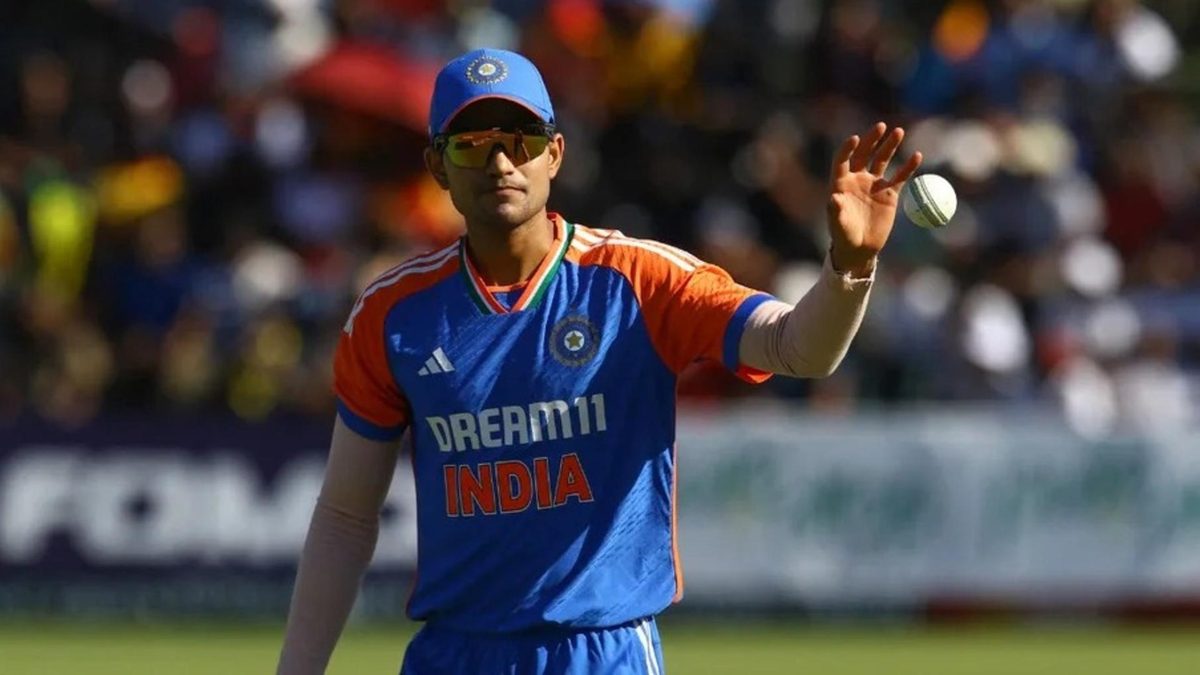
After becoming the world champions last month, India’s next generation started on a winning note with a 4-1 series win in Zimbabwe. Despite the scoreline, there were several questionable tactics India applied that didn't let them make the best use of the five games on offer.
Gill’s strike-rate at the top is a step backward for India
India, under Rohit Sharma, consciously changed their batting approach after their 2022 T20 World Cup semi-final defeat against England. Rohit took the onus on himself to take the attack to the opposition from the word go, something which is becoming the norm in the ever-changing demands of the format.
The success is there for everyone to see as India entered the series as world champions, with Rohit’s kamikaze method being one of the driving forces behind it.
For the Zimbabwe tour, Gill was given the charge of a young India side undergoing a transition as several of their players have retired from the T20I format, including their title-winning captain Rohit. While he finished the series with the most runs (170) at an average of 42.50 while opening the batting, his strike-rate of 125.92 left a lot to be desired.
In a series headlined by India's openers, is Shubman Gill's batting a cause of concern?
— Wisden (@WisdenCricket) July 15, 2024
Read the takeaways from India's T20I tour of Zimbabwe here: https://t.co/SnO22vlK66 | #ZIMvIND pic.twitter.com/UHwD8thb1b
His timid approach was a step back from the positive changes that were brought previously. It’s an open secret that he is earmarked as India's next all-format superstar. However, it would do more harm for India than good if he continues to bat like this.
Questionable batting order: A traffic jam of openers
A low-profile series like this leaves a lot more room for experimentation. Yet an upset in a low-scoring curtain-raiser forced India into a shell. They immediately brought in an extra batter in Sai Sudharshan and sacrificed one among the four specialist bowlers.
In the third match, India included Yashasvi Jaiswal and Shivam Dube instead of newcomers Riyan Parg and Dhruv Jurel, who were dropped after two games and only one chance each with the bat, to bolster the batting further and make up for the bowling loss. The decision resulted in the tourists ending up with four openers in the top order – Jaiswal, Gill, Abhishek Sharma, and Ruturaj Gaikwad.
Surprisingly, Abhishek was pushed down to No.3 a match after he scored a record-breaking 46-ball century at the top. He couldn't do anything notable since his demotion, leading to calls that Gill should have sacrificed his opening spot and come in at three. Additionally, playing Ruturaj Gaikwad at No.4 isn’t viable for a longer period if one considers this a rehearsal for future team combinations, indicating India were too timid and afraid of making bold choices.
Was Rinku Singh underutilised?
Going forward for India, Rinku Singh’s role as India’s designated finisher is paramount to their success. After a prolific debut in the format, he narrowly missed a berth in India’s main squad of the 2024 T20 World Cup, albeit he was among the travelling reserves.
The Zimbabwe series was a perfect opportunity for him to maximise his game time lower down the order. Yet his chances were minimal. Though some of that could be attributed to India’s in-form top order, a few debatable calls from the management also played a hand.
Seven months after denying his role in replacing Virat Kohli with Rohit Sharma as Indian captain, Sourav Ganguly recalled his influence over the same affair.
— Wisden (@WisdenCricket) July 14, 2024
Read here🔽 https://t.co/UFPnRTEOQx pic.twitter.com/cchdsro4d8
After his 22-ball 48 not out in the high-scoring second match, he only batted 10 deliveries across the next three without being dismissed. In the third fixture, India were 153-3 when Gill departed for a 49-ball 66 in the 18th over. This could have been a perfect entry point for Rinku. But India instead sent in Sanju Samson, who remained unbeaten on 12 off seven. Rinku only played a ball in that game. In the last game, Rinku came in the 18th over, managing a nine-ball 11 not out.
India sending in Samson and Shivam Dube ahead of Rinku even though less than three overs were remaining in the innings when Rinku's exact role is to come in at the very end and go big from ball one, did not make a lot of sense.
Lack of flexibility in bowling changes
India’s reluctance to use Sundar – adjudged the Player of the Tournament for putting on a show with his finger-spin – effectively in different phases was a missed opportunity too. His usage was limited to the middle overs, as evidenced from the fact that he bowled only one over in the powerplay (the same as Abhishek Sharma) and two at the death. Ravi Bishnoi, on the other hand, was used in the powerplay and the death overs throughout the series.
Follow Wisden for all updates, including live scores, match stats, quizzes and more. Stay up to date with the latest cricket news, player updates, team standings, match highlights, video analysis and live match odds.








